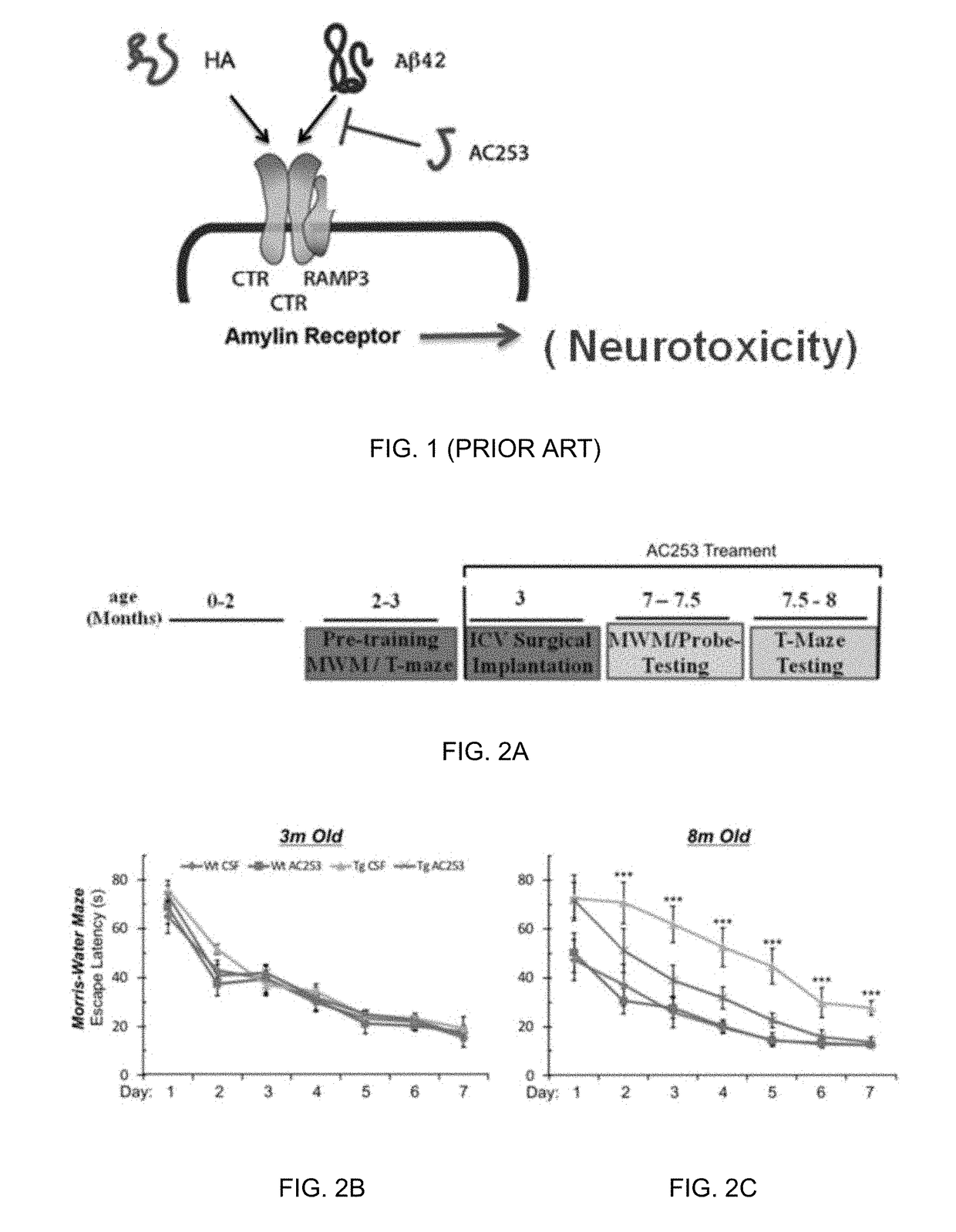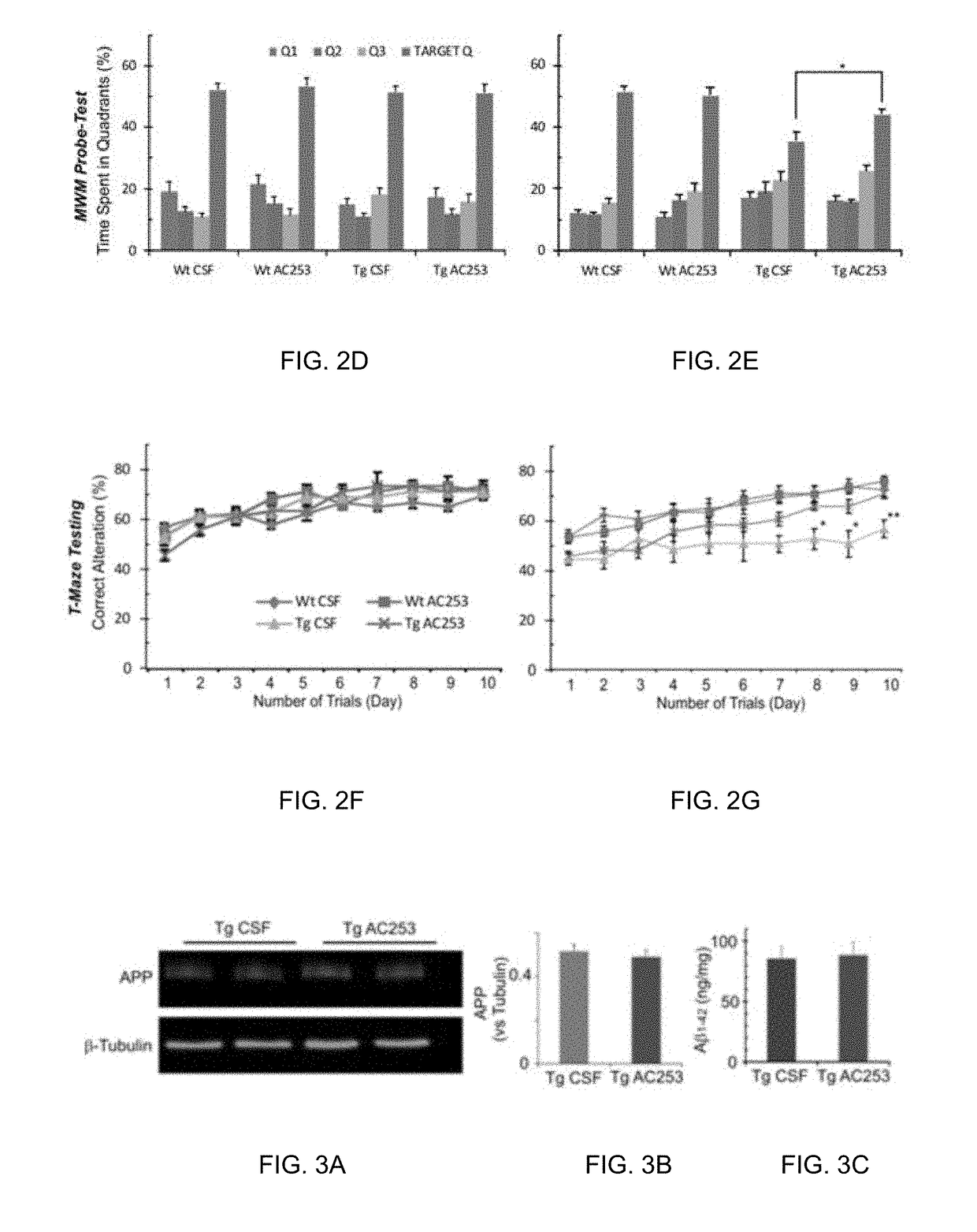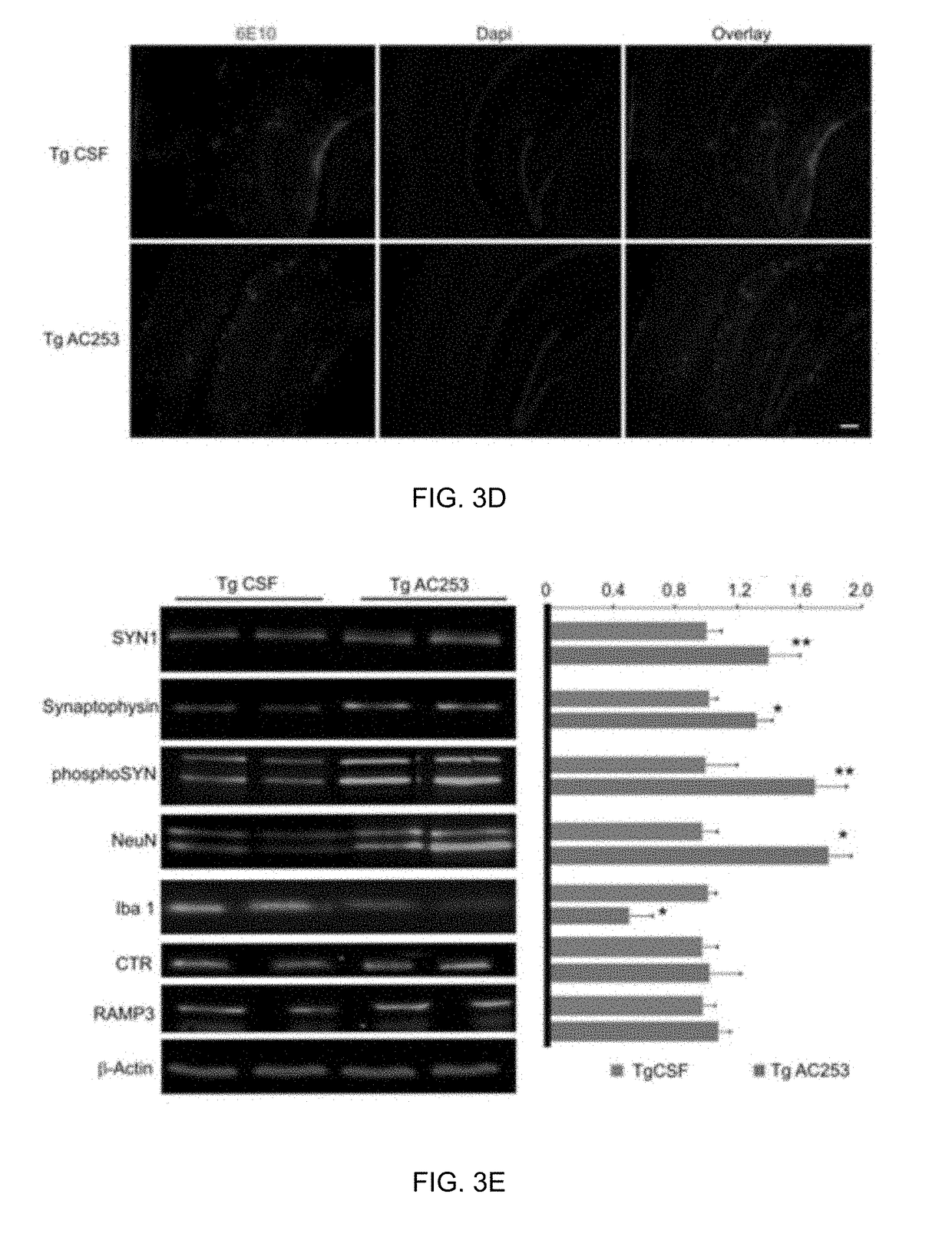Brain penetrant amylin receptor based peptides for alzheimer's disease
- Summary
- Abstract
- Description
- Claims
- Application Information
AI Technical Summary
Benefits of technology
Problems solved by technology
Method used
Image
Examples
example 1
[0071]All chemicals were analytical grade and used without further purification. hAmylin, and Aβ1-42 were from rPeptide (Bogart, Ga.). Rink amide resin (0.4 mmol / g), (2-(6-chloro-1H-benzotriazole-1-yl)-1,1,3,3-tetramethylaminiumhexafluoro phosphate) (HCTU), 1-hydroxybenzotriazole (HOBt), and the Fmoc-amino acids were from NovaBiochem (San Diego, Calif.). Fmoc-amino acids were supplied with the following side-chain protection: Fmoc-Asn(Trt)-OH, Fmoc-Arg(Pbf)-OH, Fmoc-Cys(Trt)-OH, Fmoc-Gln(Trt)-OH, Fmoc-His(Trt)-OH, Fmoc-Ser(OtBu)-OH, Fmoc-Thr(OtBu)-OH, Fmoc-Tyr(OtBu)-OH. Trifluoroacetic acid (TFA), N,N-Diisopropylethylamine (iPrNEt), piperidine, and triisopropylsilane (iPr3SiH) were from Sigma-Aldrich (Canada). Human serum was from Aldrich (Canada). Cyanine5.5 NHS ester dye was from Lumiprobe (USA). Amino-PEG500 cellulose membrane derivatized with a polyethylene (PEG) was from (Intavis AG, Germany). N,N′-Diisopropylcarbodiimide (DIC), N,Ndimethylformamide (DMF), 1-Ethyl-3-(3-dimethyl...
example 2
dels and Drug Administration
[0072]Age-matched, wild-type littermate (C57BL / 6 background) male or female mice were used. TgCRND8 mice (human APP695 transgene array incorporating Swedish K670M / N671L and Indiana V717F mutations superimposed upon a C57BL6 genetic background) which exhibit Aβ plaques and cognitive defects by 6 months of age (Chishti et al., 2001) were obtained from Dr. David Westaway (University of Alberta). Heterozygous CTR (het CTR) mice (C57BL / 6J background) with a 50% deletion of CTR were obtained from Drs. R. A. Davey and J. D. Zajac (Department of Medicine, Austin Health, University of Melbourne, Heidelberg, Victoria, Australia). Mice were housed individually under standard laboratory conditions (12 / 12-h light / dark cycle, lights on at 0600 h) with a room temperature of 21° C. Water and food were available ad libitum unless otherwise indicated. All tests were performed during the light phase between 0900 and 1600 h in accordance with institutional guidelines. The mi...
example 3
l Testing
[0074]i) Morris Water Maze (MWM)
[0075]The MWM apparatus consisted of a 2 m circular blue plastic pool filled with water (24-25° C.), which was rendered opaque by the addition of non-toxic white paint. An escape platform (20 cm in diameter) was submerged 0.5 cm under the water level. Dark posters differing in shape (one per wall) provided distant landmarks. The behavior of a mouse was recorded by a video camera connected to a video tracking system (HVS Image 2100, HVS Image, Buckingham, UK).
[0076]The pool was surrounded by a white curtain, and a mouse was released facing the wall at points (N, E, S, W) which were chosen semi-randomly. The mice were trained for 7 days (7 trials per day) to find a submerged platform located in the centre of the NE quadrant of the pool (target quadrant, TQ). The trial ended when a mouse found and climbed onto the platform within 120 seconds. If the mouse failed to find the platform, it was guided to the platform by an experimenter. After a 10 s...
PUM
| Property | Measurement | Unit |
|---|---|---|
| Time | aaaaa | aaaaa |
| Time | aaaaa | aaaaa |
Abstract
Description
Claims
Application Information
 Login to View More
Login to View More - R&D
- Intellectual Property
- Life Sciences
- Materials
- Tech Scout
- Unparalleled Data Quality
- Higher Quality Content
- 60% Fewer Hallucinations
Browse by: Latest US Patents, China's latest patents, Technical Efficacy Thesaurus, Application Domain, Technology Topic, Popular Technical Reports.
© 2025 PatSnap. All rights reserved.Legal|Privacy policy|Modern Slavery Act Transparency Statement|Sitemap|About US| Contact US: help@patsnap.com



